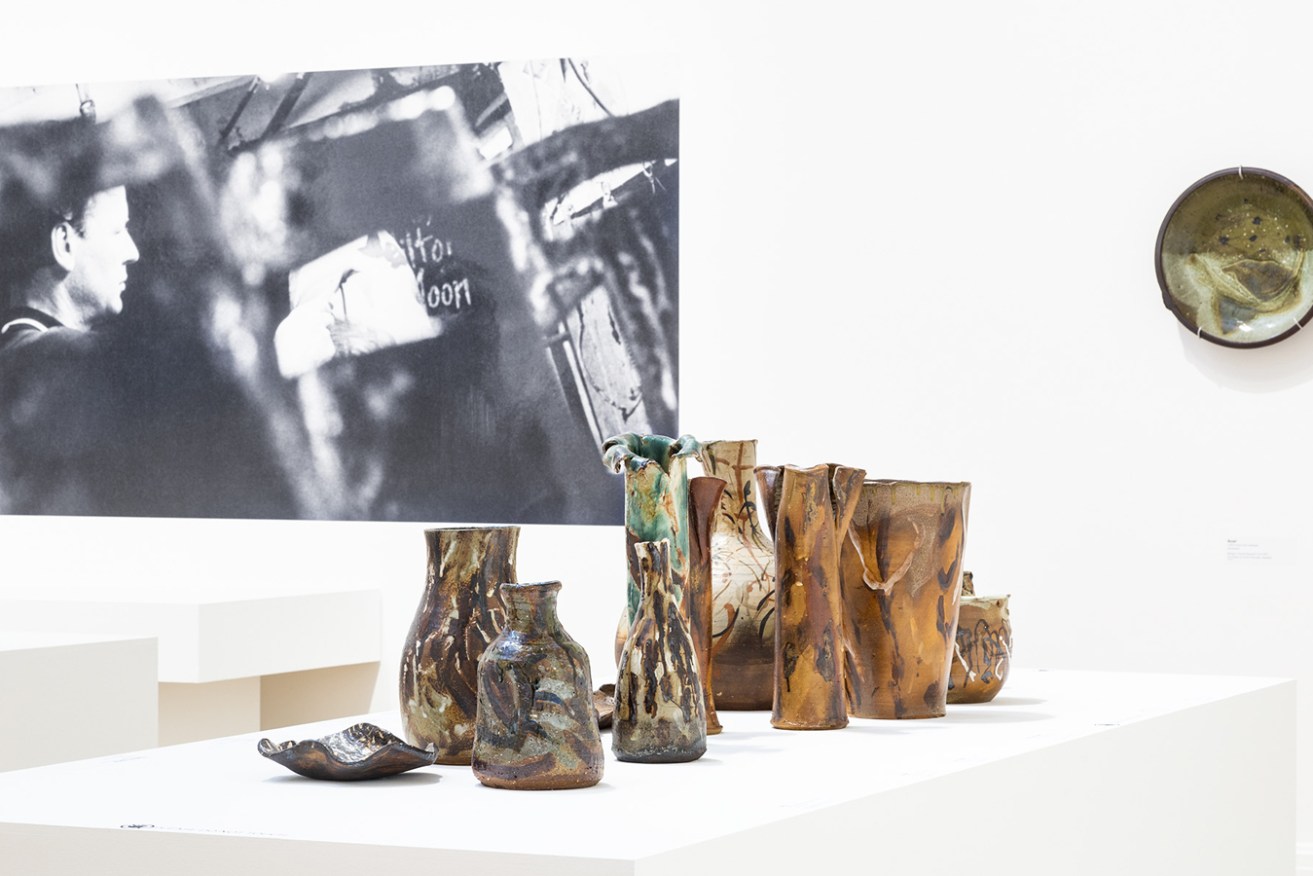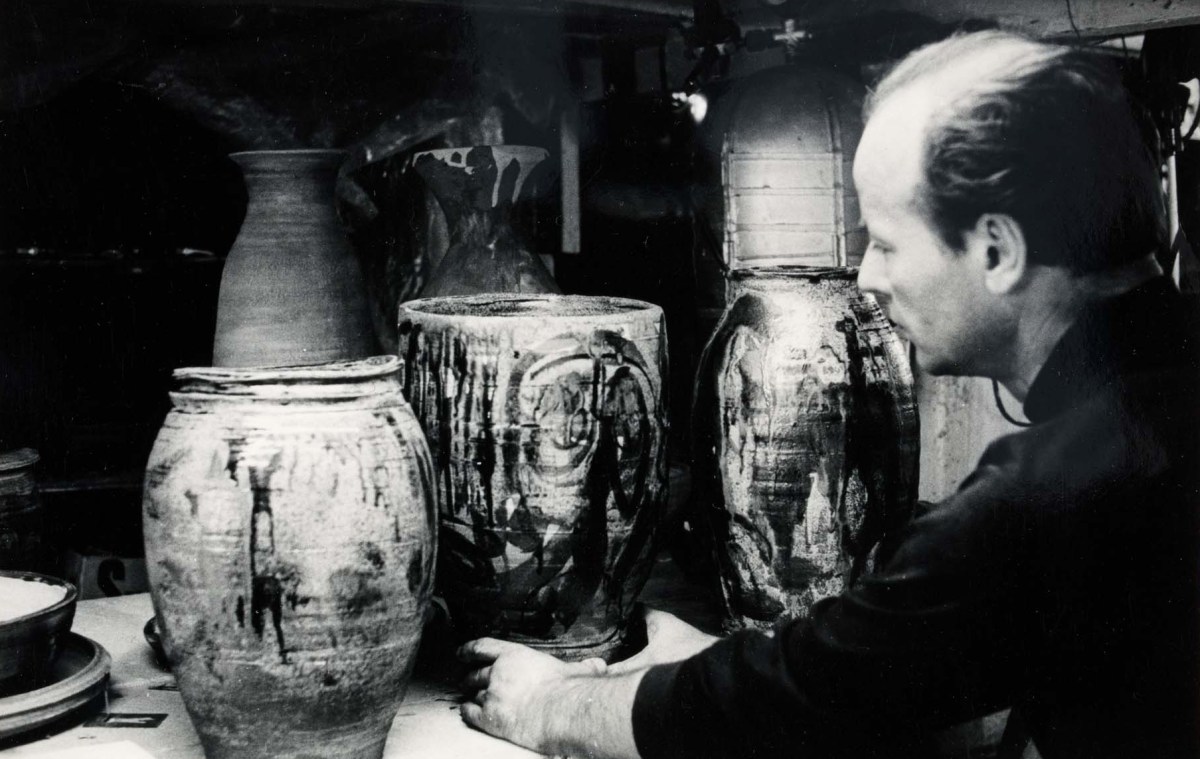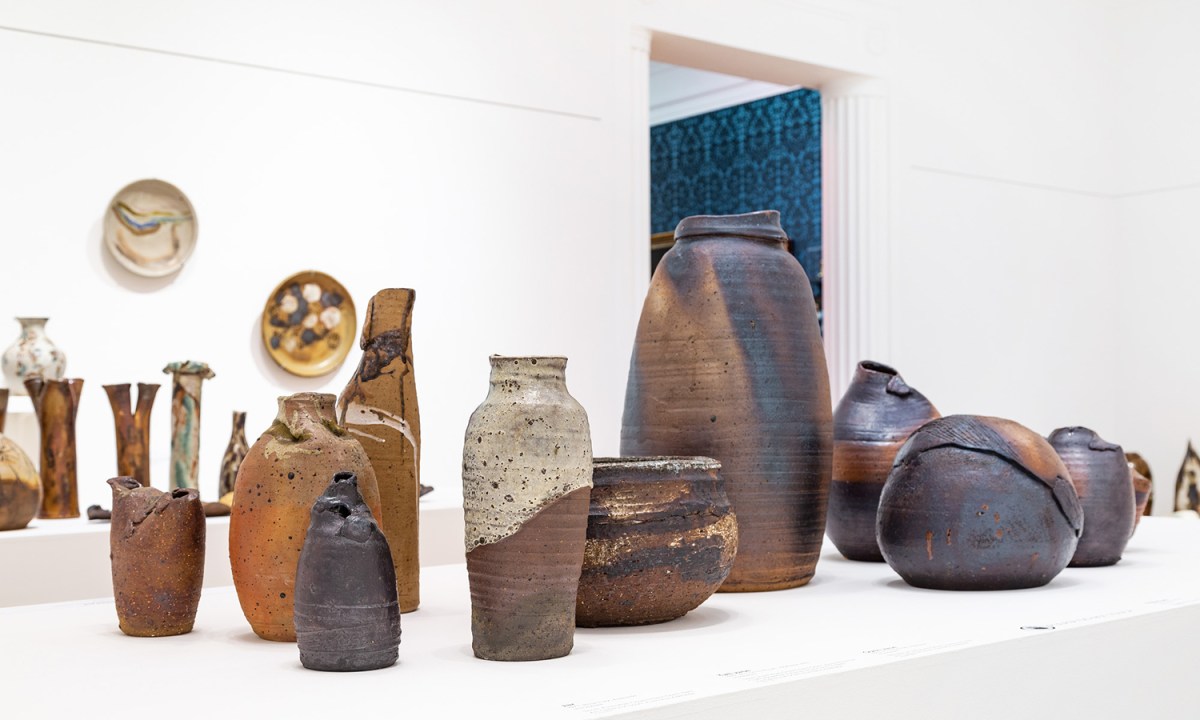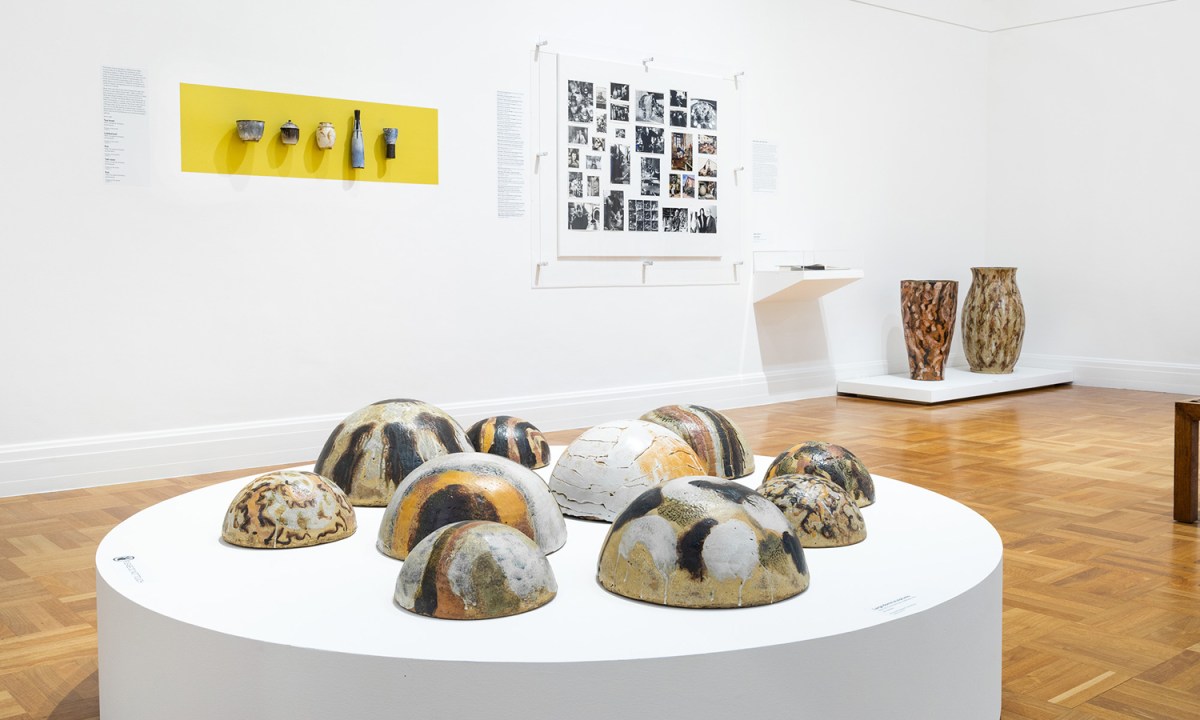The lifelong creative quest of Milton Moon
Crafting modernism offers an intriguing insight into the lifelong creative journey of South Australian potter Milton Moon, who was fuelled by a vision that married Zen philosophy with a determination to express a distinctly Australian sense of place.


Installation view: 'Milton Moon: Crafting modernism', Art Gallery of South Australia, Adelaide. Photo: Saul Steed / supplied
Milton Moon: Crafting modernism
Art Gallery of South Australia
By the 1960s, studio pottery in Australia looked to have taken some giant steps along the road to be re-badged as “ceramic art”. A new breed of clay botherers were exploring fresh ideas such as putting native flora and fauna front and centre in functional and decorative ware. Across the 1940s to 1960s period, the Arthur Merric Boyd Pottery at Murrumbeena, for example, inspired an emerging generation of artists with its output of decorated and modelled wares that were increasingly described as “ceramic sculpture”.
There was spillage into the so-called fine arts, with artists Arthur Boyd and John Perceval among others exploring the expressive potential of the medium.
Parallel to this home-grown movement, a global studio pottery trend, associated with the British potter Bernard Leach, exemplified an Anglo/Japanese aesthetic. Central to this development was a desire to link modern pottery traditions with the past. Ceramic artists in this camp closely studied traditional ware, particularly from Japan, in striving to create wares in which the glaze, decoration and form worked in unison to create vessels worthy of contemplation.

Milton Moon in his studio in Tarragindi, Queensland, in 1966. Photo: John McKay, Milton Moon archive
The impulse to invest work with an essential Australian character remained strong and could be identified in the work of a number of artist-potters of the mid-war period. Into the 1960s an emerging generation of Australian potters, including Milton Moon, Col Levy, Peter Rushforth and Les Blakebrough, sustained and refined this conversation between vernacular Australian and Asian ceramic traditions. The Art Gallery of South Australia’s current exhibition, surveying Milton Moon’s creative journey, provides an intriguing insight into a lifelong commitment to make such ceramic objects.
The backstory to this journey is a reminder that nothing in art is ever assured. One could glide through this exhibition, lulled by the subtle exchanges of tones and textures and the delicate floral motifs that look to have been transferred from an ancient screen or scroll.
The homage paid to traditional vessel forms, particularly the vase, strikes a reassuring note of respectful complicity with ancient ceramic traditions. But in the later 1960s and into the ’70s, Moon’s work, along with that of other like-minded studio potters, was thrown into sharp relief by yet another emerging generation which was not particularly interested in honouring the past but in co-opting ceramics, and all that it stood for, to the causes of political comment, satire and creative play.

AGSA exhibition Milton Moon: Crafting modernism explores key moments of transformation in the artist’s career. Photo: Saul Steed
In this ribald revolution in Adelaide in the later 1960s, artists including Olive Bishop, Margaret Dodd, Paul Greenaway, Bruce Nuske and Mark Thompson defined the pulse-beat of what came to be known as Skangaroovian Funk. Moon’s work, in contrast began to look old school.
It was never that simple, of course. Moon kept working, a seer-like figure as he advanced into his senior years, still hefting clay, throwing and firing and remaining true to his ideals and the intersection of a vision that married Zen philosophy with a determination to express a lived Australian experience, shaped by the land and nature.
One of the catalogue essay writers, Tracey Lock, stretches this idea of a lifelong quest to a suggestion that Moon was driven by a spiritual impulse, exploring a range of aesthetic modes “that alluded to the spiritual”. Lock extends this argument to complement insights of other catalogue contributors, Russell Kelty, Claire Roberts and Rebecca Evans (curator of Milton Moon: Crafting modernism).
While acknowledging the influences and connections that Kelty comprehensively outlines, between Moon’s personal journey and a lifetime’s engagement with Japanese ceramic traditions, and Evans’ persuasive arguments that Moon and artist-painters, including Ian Fairweather, John Olsen and Fred Williams, occupied significant common ground, Lock holds out for an overarching understanding of Moon as an artist whose work is better understood a little outside the contexts of Japanese traditions or an Australian sense of place.
Roberts amplifies the Fairweather connection to support this view of Moon as a maker of art works, a true artist who was respectful of a creative process in which, as the artist says, “the best pots have grown in a manner which seems dictated by them”.
The accompanying publication, designed by Antonietta Itropico, is a handsome work which matches Moon’s nuanced aesthetic codes in its pared-back elegance. It includes personal insights into Milton, the man and father, as well as extensive technical notes on Moon’s ceramic production and techniques, provided by his son, Damon Moon.

Milton Moon: Crafting modernism at the Art Gallery of SA. Photo: Saul Steed
The exhibition matches the individual pieces and publication in its bare-boned simplicity, favouring brightness and lightness over theatrical spotlighting to allow the sculptural qualities of individual works to be more fully appreciated. It is a far cry from the slip, slap and spin of Moon’s ceramic studios as many would remember them. But in elevating artefacts to the status of museum art, something had to give.
My advice – select a few favourites and spend time having a quiet conversation with them. Later, read the essays to ignite trails of curiosity that might lead you into any number of reflective spaces. But never lose sight of the fact that these are fire-fed, muscular objects that want to elbow their way into your comfortable life. Approach with care.
Milton Moon: Crafting modernism is showing at the Art Gallery of South Australia until August 6.




